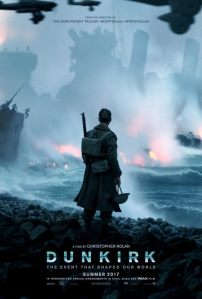 It’s that time of year again! The Academy of Motion Picture Arts and Sciences has announced the nominees for the 2018 Oscars, now celebrating its 90th year. Here are my picks for each category! The Academy may vote for these or another nominee, but I just wanted to post the ones I would like to see win this year. For a complete listing of nominees, please visit VARIETY! I am pretty happy with this year’s list of nominees, there are only a few films, collectively, that I thought were overlooked in their respective category. Fortunately, I have seen most of the films on this list! If I have not seen the movies in a category, I have listed all the nominees. Who do you hope wins this year?!?
It’s that time of year again! The Academy of Motion Picture Arts and Sciences has announced the nominees for the 2018 Oscars, now celebrating its 90th year. Here are my picks for each category! The Academy may vote for these or another nominee, but I just wanted to post the ones I would like to see win this year. For a complete listing of nominees, please visit VARIETY! I am pretty happy with this year’s list of nominees, there are only a few films, collectively, that I thought were overlooked in their respective category. Fortunately, I have seen most of the films on this list! If I have not seen the movies in a category, I have listed all the nominees. Who do you hope wins this year?!?
Best Picture: “The Shape of Water”
Lead Actor: Gary Oldman, “Darkest Hour”
Lead Actress: Margot Robbie, “I, Tonya”
Supporting Actor: Christopher Plummer, “All the Money in the World”
Supporting Actress: Allison Janney, “I, Tonya”
Director: “The Shape of Water,” Guillermo del Toro
Animated Feature: “Coco,” Lee Unkrich, Darla K. Anderson
Animated Short: I have not seen any of these, so here is the list for you to decide
“Dear Basketball,” Glen Keane, Kobe Bryant
“Garden Party,” Victor Caire, Gabriel Grapperon
“Lou,” Dave Mullins, Dana Murray
“Negative Space,” Max Porter, Ru Kuwahata
“Revolting Rhymes,” Jakob Schuh, Jan Lachauer
Adapted Screenplay: “Logan,” Scott Frank & James Mangold and Michael Green
Original Screenplay: “The Shape of Water,” Guillermo del Toro, Vanessa Taylor
Cinematography: “The Shape of Water,” Dan Laustsen
Best Documentary Feature: I have not seen these films, so here is the full list
Best Documentary Short Subject: I have not seen these films, so here is the full list
“Edith+Eddie,” Laura Checkoway, Thomas Lee Wright
“Heaven is a Traffic Jam on the 405,” Frank Stiefel
“Heroin(e),” Elaine McMillion Sheldon, Kerrin Sheldon
“Knife Skills,” Thomas Lennon
“Traffic Stop,” Kate Davis, David Heilbroner
Best Live Action Short Film: I have not seen these films, so here is the full list
“DeKalb Elementary,” Reed Van Dyk
“The Eleven O’Clock,” Derin Seale, Josh Lawson
“My Nephew Emmett,” Kevin Wilson, Jr.
“The Silent Child,” Chris Overton, Rachel Shenton
“Watu Wote/All of Us,” Katja Benrath, Tobias Rosen
Best Foreign Language Film: “The Square” (Sweden)
Film Editing: “The Shape of Water,” Sidney Wolinsky
Sound Editing: “Dunkirk,” Alex Gibson, Richard King
Sound Mixing: “Dunkirk,” Mark Weingarten, Gregg Landaker, Gary A. Rizzo
Production Design: “The Shape of Water,” Paul D. Austerberry, Jeffrey A. Melvin, Shane Vieau
Original Score: “The Shape of Water,” Alexandre Desplat
Original Song: “This Is Me” from “The Greatest Showman,” Benj Pasek, Justin Paul
Makeup and Hair: “Darkest Hour,” Kazuhiro Tsuji, David Malinowski, Lucy Sibbick
Costume Design: “Beauty and the Beast,” Jacqueline Durran
Visual Effects: “Blade Runner 2049,” John Nelson, Paul Lambert, Richard R. Hoover, Gerd Nefzer


